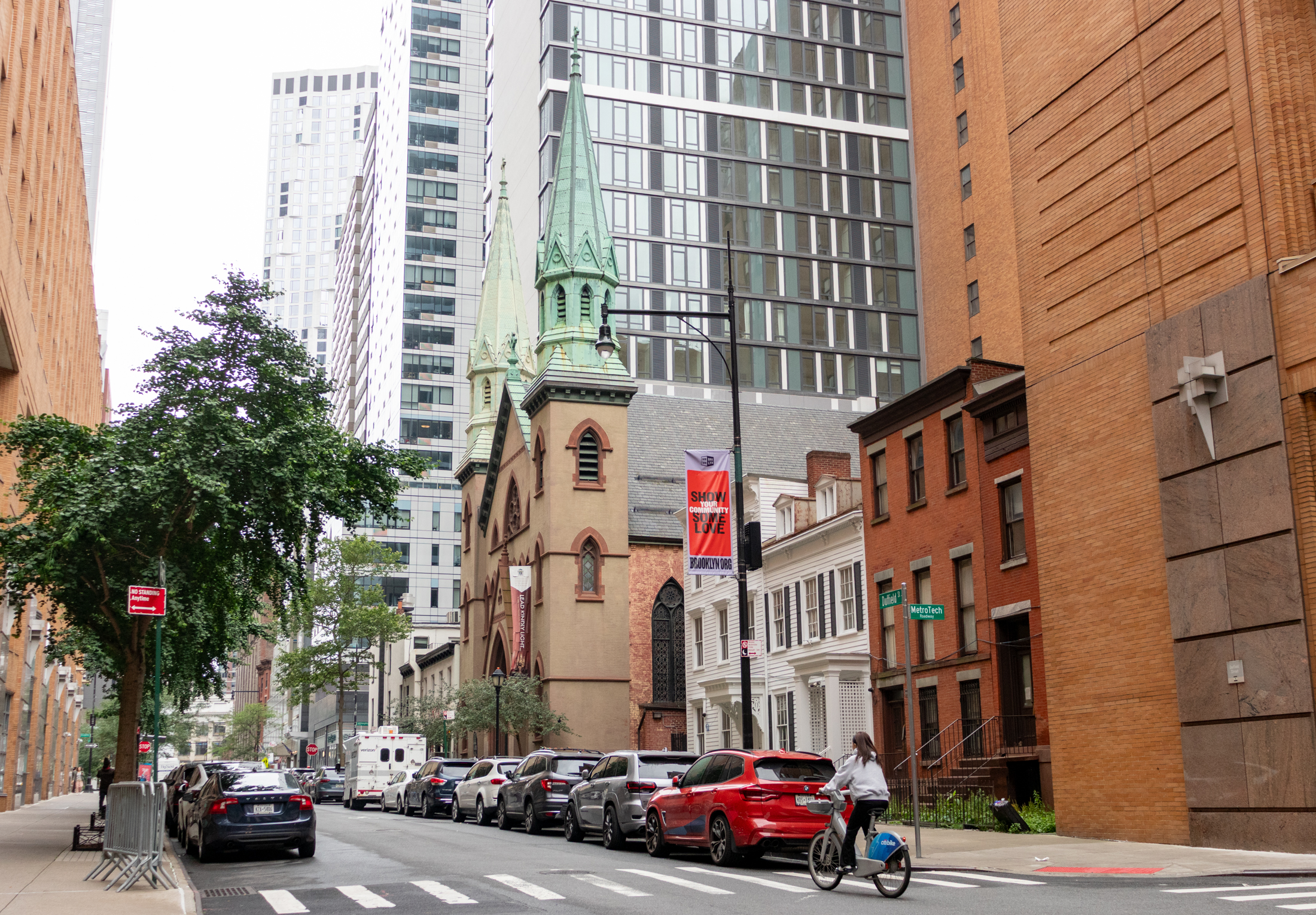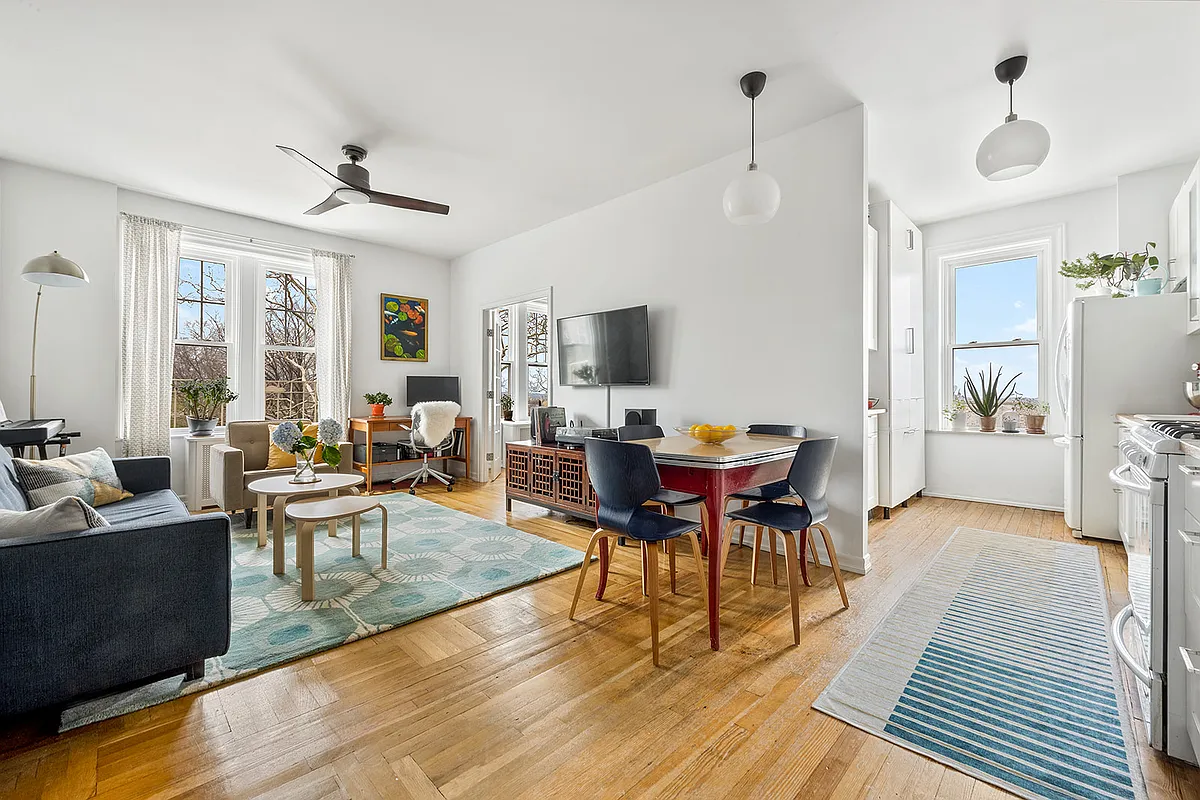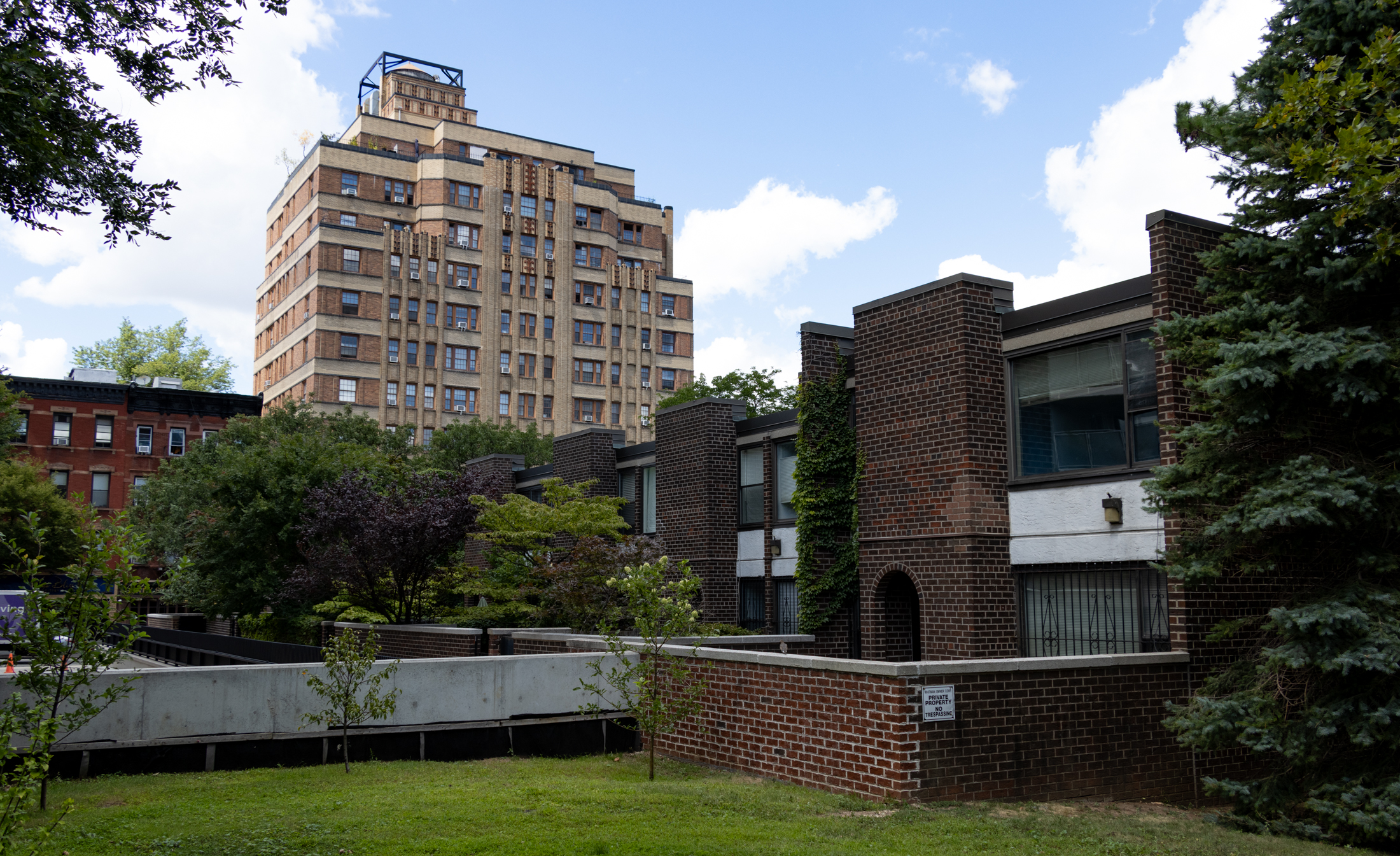Ambitious Bed Stuy Flip 196 Hancock Closes $250,000 Above Ask
An 1880s Queen Anne on one of Bed Stuy’s best blocks attracted lots of media attention in March when a flipper bought it for $1,200,000 and then turned right back around and listed it for $1,850,000, “grotty kitchens and all,” as a Brownstoner commenter saw it. The house at 196 Hancock Street, originally an estate…


An 1880s Queen Anne on one of Bed Stuy’s best blocks attracted lots of media attention in March when a flipper bought it for $1,200,000 and then turned right back around and listed it for $1,850,000, “grotty kitchens and all,” as a Brownstoner commenter saw it. The house at 196 Hancock Street, originally an estate sale dripping with original detail but in need of work, closed at $2,100,000 all cash Friday, or $250,000 above ask, Halstead agent Ban Leow told us. He declined to say anything about the identity of the buyers and whether they plan to live in the house.
The location of the house played a big part in its final price, said Leow. “I think prices in Bed Stuy are going to soar over the summer,” he continued. “Not for all properties, but for trophy properties, depending on the size and location. The fact of the matter is Bed Stuy has never been expensive and now we are tagging a price worthy of the property.”
Brick Underground was the first to note that the house had spiked 54 percent, or $650,000, in price in only three days. In an article in The New York Daily News, investor-flipper Eric Mann justified the price increase by saying he paid tenants to leave, cleaned up and removed a partition wall.
The final sale price is edging close to the all-time record for a townhouse in Bed Stuy. So far, no sale has eclipsed the record holder, 254 Gates Avenue, a Parfitt Brothers-designed beauty, which sold for $2,200,000 back in January of 2013. But, crucially, that house was renovated and in perfect condition as well as dripping with details. The house at 196 Hancock is unrenovated but sold for only $100,000 less.
Would a renovated house sell for more, do you think? Given that top-of-the line townhouses sell for $4,000,000 in Park Slope and just under $2,000,000 in Crown Heights, what do you think the final sale price shows about the Brooklyn real estate market?
House of the Day: 196 Hancock Street [Brownstoner]





People who buy two million dollar houses in cash are bad neighbors. They have high expectations and summer elsewhere. If the profits from the bed stay boom were being reaped by the families who lived there for generations I’d sleep easier with it myself–but that’s not the case. The amount of predation there is out of control.
And I’m enjoying popville.
Montrose Morris, while I agree with your sentiment, it’s a bit naive to expect a developer to give back to the neighborhood, especially this one. He bought one house to flip and whoever bought it from him (presumably to live in) should be held responsible for giving back and contributing to the community. The developer bought a beautiful home because of its historic value not because of the neighbors, excellent schools, etc. It would be NICE if he gave some money back but the residents of Bed Stuy didn’t contribute to his success, they aren’t the ones lining his pocket. You say Bed Stuy isn’t just a ripe field of beautiful buildings to pick and you’re right, but to a developer it doesn’t matter because they care about the property, not the community. They’re most likely not going to live there and so the future of Bed Stuy depends on the new people that are buying and staying. What will they contribute? How will they help the current residents? Will they just sit around and wait until the area is fully “gentrified” or actually care about the community around them? Those are the questions that need to be asked and the only ones that really matter.
It’s obvious that would be in everyones interest to improve the neighborhood.
To MM point, it’s not about handouts to the underprivileged, it’s about improving the community that surround these (very desirable and expensive) properties. It doesn’t take much to understand that it would improve not only the community but the asset value of those houses.
Do I expect the investors to do it? No. But I sure do expect from new owners/residents (myself included) to take part of it.
Maybe I’m lucky but most the newcomers in my block share the same principles I’m expressing here.
Critics of Montrose Morris would do well to learn about the history of the neighborhood, which was shaped directly by at least 8 decades of racist policy, not to mention the larger history of the country.
She was not painting Bedford-Stuyvesant locals as victims, but was calling out the behavior of developers and new residents that care nothing about the community of people in which they are investing or living.
Those commenters that resort to the personal attacks; the poor attempts to describe the “failings” of the people in the neighborhood; and those signing on to the false hope of the “un-discriminating” American Dream – should all look at themselves – why are they reacting so virulently to MM’s noble call to CARE about the people and community that make up this neighborhood instead of JUST caring about profits or a place to live?
bxgirl,
I’m gonna add a bit more wood to the wonderfully written fire you’ve started.
Many of the residents living in B-Stuy have a heritage here that goes back as far as the 30’s and 40’s. Seeing the neighborhood through positive and negative times. It has been a thriving community for over 70 years and not due to gentrification but due to a love and respect of creating a safe and beautiful neighborhood. As part of our job as integrated residents here is to demand better services from our elected officials, so that legislatively action can be taken to provide them. This same type of mentality is what has made beautiful B-Stuy what it is today. Though much has been and maintain without this political allegiance. I believe moving forward we will need it.
I really value your insight and point of view, Montrose. These are subjects that must be discussed and debated. When the advocate for a complicated or controversial argument is as articulate and thoughtful as you, all the better. Judgement is easy. Real solutions are not.
As this frenzied process of inevitable gentrification sweeps into neighborhoods with large populations of poor residents, it seems that some “flippers” are either waiting for or creating an environment that makes economic diversity unattractive. The end buyer who chooses to actually LIVE in one of these newly-expensive homes and become part of the community can do many of the things you mentioned earlier.
19th century brick row houses faced in brownstone – I don’t think there are any.
Brick row houses – there are a few.
Large, turn of the century houses built for the upper middle class, filled with period details, under $2 million – there are many.
Why does it have to be a brownstone, exactly?
If you had to choose between 2 hypothetical houses, same square footage, same elaborate details, but one was a row house, 20X50 on a 20X100 foot lot, and one was a victorian, 25X45 on a 40X100 foot lot, with a garage, no shared party walls, and landscaping all around, which would you choose?
Actually I think the first residents of Ditmas Park made this exact choice.
All she suggested was that it would be a good thing for someone who made lot of money easily in a community put a little back in to improve it. No mention of guilt or victims or that flipper caused or is responsible for problems or needs that exist in the neighborhood. Charity and community involvement are not something to be scorned or laughed at.
The idea that someone not be so detached from condition of fellow man seems to upset some people for some unknown reason. Philanthropy to help others obtain jobs or skills as she suggested would be a great thing to do.
MM,
Don’t even give him any energy, it’s obvious he’s victim of exactly what you discussed. His inability to read is apparent which is why we need more schools across New York instead of Developer School conversions into million dollar condos